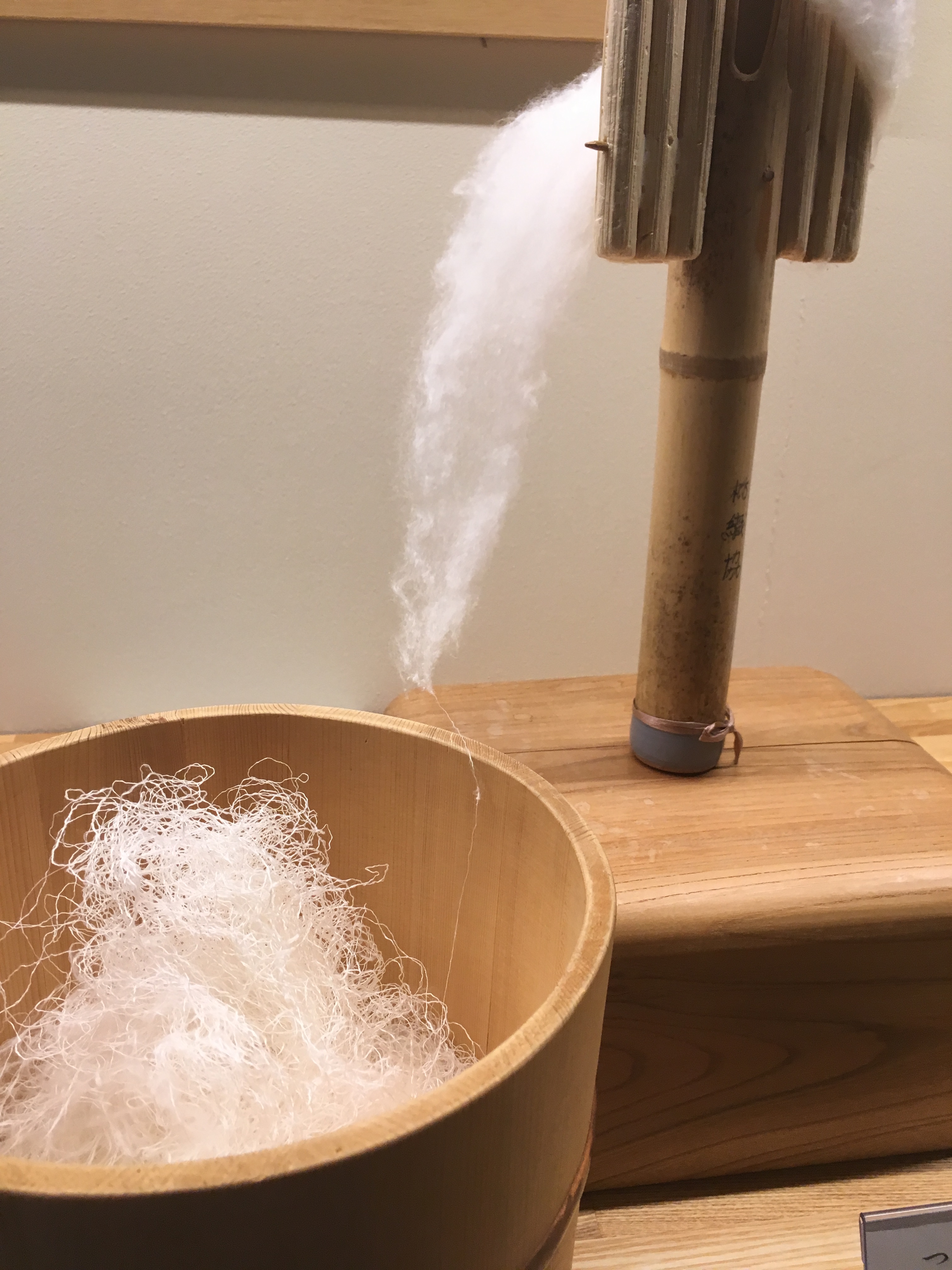Yuki-Tsumugi is a type of traditional Ibaraki silk. Traditionally, Yuki silk is made by taking the silk from boiled Cocoons, and spun by hand into Yarn. The yarns are placed appropriately with Ikat (resist dying) being applied to the yarns in the pattern desired and then using the Jibata hand loom, passing these warp and weft yarns through to create the Tanmono bolt.[1] Yuki Tsumugi is often today used for wearing in the winter as it is a very thick, heavy fabric when made up with linings, which does not chime with the Western idea about what 'silk' should feel like. To make one Kimono takes a weaver 15 days.[3]
Yuki was brought into Japan according to legend around the time of the infamous Carpenter of Nazareth, but more likely somewhere between the introduction of silk around 500 CE or during the tailend of the Heian period, around 1200 CE.[2] It historically accurate to begin Yuki history proper around 1602 when it was presented as a gift to Tokugawa Ieyasu (1543-1616). As a fabric, it is rather plain and has historically been used to siginify an 'earthy' fabric. In 1873, it was used at the Vienna World Exposition to identify a 'Japanese textile', and is currently practiced by 130 known craftspeople. These are backed up by the fact that Yuki has been an IICPJ (Important Intangible Cultural Properties of Japan) since 1956.
[1] See Fabrics #2
[2] See Fabrics #3 under TLDR
[3] https://en.wikipedia.org/wiki/Y%C5%ABki-tsumugi
Socials:
https://linktr.ee/Kaguyaschest
https://www.etsy.com/uk/shop/KaguyasChest?ref=seller-platform-mcnav or https://www.instagram.com/kaguyaschest/ or https://www.youtube.com/channel/UC5APstTPbC9IExwar3ViTZw, or https://www.pinterest.co.uk/LuckyMangaka/hrh-kit-of-the-suke/
